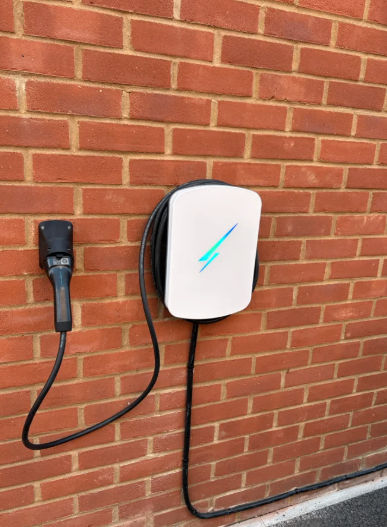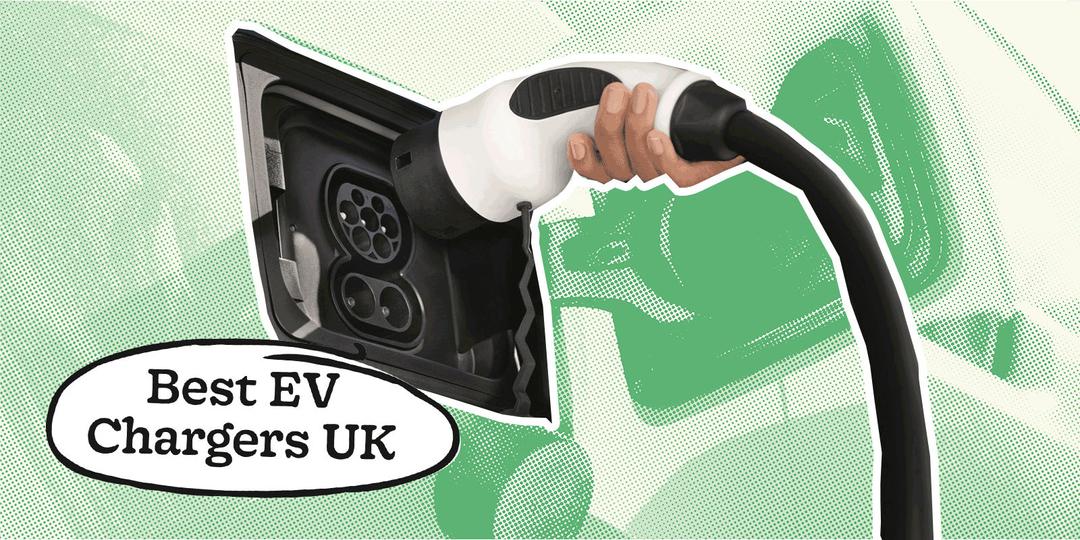So, you’re ready to make the leap into the world of electric vehicles (EVs) - brilliant choice! With EVs becoming the go-to for eco-conscious drivers across the UK, installing a home charger is a no-brainer for convenience and cost savings.
But here’s an important question: Should you go for a tethered or an untethered EV charger? Don’t worry if you’re scratching your head - we’re here to break it down.
Let’s plug in and explore the differences, pros, cons, and which option might suit your lifestyle best.
Quick Takeaways:
Tethered chargers have a fixed cable for quick, secure plug-ins, ideal for daily convenience.
Untethered chargers use a detachable cable, offering flexibility for different EVs and a sleeker look.
Both charger types support Type 2 connectors, standard for most modern UK EVs.
Consider parking setup: Tethered cables are typically 5m or 7.5m; untethered allows longer cables.
Installation costs vary - tethered includes the cable, while untethered may require a separate purchase (£100+).
Heatable offers UK-wide EV charger installation. Get your free quote here 🔌🚗
What’s the Difference Between Tethered and Untethered EV Chargers?
At their core, both tethered and untethered chargers do the same job: they juice up your electric car so you’re ready to hit the road.
The key difference? It’s all about the cable.
Tethered EV Chargers: These come with a charging cable permanently attached to the unit, like a petrol pump at a forecourt. You just grab the cable, plug it into your car, and you’re good to go. Most tethered chargers in the UK use a Type 2 connector, the standard for modern EVs.
Untethered EV Chargers: These are more like a socket - there’s no fixed cable, so you use your own (usually the one that came with your car). You plug one end into the charger and the other into your vehicle, then store the cable away when you’re done.
Sounds simple, right? But each option has its own perks and quirks. Let’s dive into the nitty-gritty to help you decide…
Feature | Tethered EV Charger | Untethered EV Charger |
Pros |
|
|
Cons |
|
|
Best Use Cases |
|
|
Tethered EV Chargers: The Plug-and-Play Option
Tethered chargers are the UK’s most popular choice for home charging, and it’s easy to see why.
They’re all about convenience and simplicity - perfect for drivers who want to keep things straightforward.
Pros of Tethered Chargers
Super Convenient: No rummaging in the boot for a cable. Just pull up, unplug the cable from its holder, and connect it to your car. Job done. This is a godsend on rainy days or when you’re in a rush.
Theft-Proof: Since the cable is fixed to the unit, it’s much harder for opportunists to nick it. Replacing a stolen cable can cost £100-£200, so this added security is a big win.
Neat Storage: Many tethered chargers come with hooks or reels to wrap the cable around when not in use, keeping your driveway looking tidy (ish).
No Extra Costs: The cables’s included in the price, so there’s no need to fork out for a separate one.
Cons of Tethered Chargers
Fixed Cable Length: Most tethered chargers come with a 5m or 7.5m cable, which is fine for most driveways. But if your car’s parked further away, you might need to pay extra for a longer cable – or rethink your parking setup.
Connector Lock-In: Tethered chargers are limited to one connector type (usually Type 2, though some older models use Type 1). If you switch to an EV with a different connector, you might need a new charger.
Aesthetic Concerns: Some folks find the dangling cable a bit unsightly, especially if there’s no fancy cable tidy. It’s not a dealbreaker, but worth considering if kerb appeal is your thing.
Home-Only Use: You can’t take the cable with you, so you’ll need a separate one for public charging points (most of which are untethered).
As of April 2025, the UK has over 76,000 public EV chargers—far outnumbering the 8,353 petrol stations still in operation. With charging now built into many new homes, the electric shift is well underway.
Untethered EV Chargers: The Flexible Choice
Untethered chargers are the free spirits of the EV charging world.
They give you more control and adaptability, which can be a game-changer depending on your needs.
Pros of Untethered Chargers
Future-Proof Flexibility: With an untethered charger, you can swap cables to match your car’s connector (Type 1 or Type 2) or upgrade to a longer one without replacing the whole unit. This is ideal if you plan to switch EVs in the future.
Sleek and Tidy: No permanent cable means a cleaner, more minimalist look on your wall. If you’re all about that Instagram-worthy driveway, this might be your vibe.
Portable Cable: You can take your charging cable with you, making it handy for public chargers or charging at a mate’s house (as long as they’ve got an untethered unit too).
Space-Saver: Untethered chargers are more compact, perfect for smaller walls or tight spaces.
Cons of Untethered Chargers
Slightly Less Convenient: You’ll need to plug the cable into both the charger and your car every time you charge, then store it away. It’s not a massive hassle, but it’s an extra step compared to tethered chargers.
Cable Costs: If your EV didn’t come with a cable, you’ll need to buy one separately, which can set you back £100 or more, depending on length and type.
Theft Risk: Detachable cables are easier to steal, so you’ll want to store them securely when not in use. Some untethered chargers, like the Easee Charge, come with cable-locking features to reduce this risk.
Storage Hassle: You’ll need a safe spot to stash your cable (like your boot or garage) to avoid dirt or damage. If you’re prone to misplacing things, this could be a niggle.
Another Hypervolt Home Pro, expertly installed by the Heatable team.⚡
We make home EV charging effortless - with smart tech, tidy installs, and top-tier service.

Thinking about getting one?
Tap below to get your free quote in seconds 🔌🚗
[Get My Free EV Charger Quote →]
Which Charger Should You Choose?
There’s no one-size-fits-all answer here – it’s all about what fits your lifestyle, budget, and parking setup. Here’s a quick rundown to help you decide:
Choose a Tethered Charger If:
You value convenience above all else and want to plug in without any hassle.
Your EV uses a Type 2 connector (most modern EVs do).
You’re happy with a fixed cable length and don’t plan to change cars soon.
Security is a priority, and you don’t want to worry about cable theft.
Choose an Untethered Charger If:
You want flexibility to switch cables or use them at public chargers.
Aesthetics matter, and you prefer a sleek, cable-free look.
You might upgrade to a different EV with a new connector type in the future.
You’re comfortable with the extra step of plugging in and storing a cable.
“Choosing the right EV charger is about matching your daily routine. Tethered chargers are a lifesaver for busy households, but if you’re planning to upgrade your EV, untethered gives you room to adapt without breaking the bank,” - Ben McMonnies, Solar & EV Charger Installation Manager.
Still not sure? Here are a couple of real-world scenarios:
Scenario 1: The Busy Commuter
You’re always on the go, charging your Type 2-equipped EV every night in your driveway.
A tethered charger is probably your best bet for its grab-and-go simplicity, saving you precious minutes in your hectic schedule.
Scenario 2: The Tech-Savvy Trendsetter
You love sleek design and plan to upgrade your EV in a few years.
An untethered charger offers the flexibility to swap cables and keeps your home looking sharp, with the bonus of using your cable at public chargers.
A Few Extra Things to Consider
Connector Types: Most modern EVs in the UK use Type 2 connectors, which are standard for both tethered and untethered chargers. Older models, like the first-gen Nissan Leaf, might use Type 1, so double-check your car’s specs before buying.
Cable Length: Measure the distance between your charger’s planned spot and where you park. Tethered chargers often come with 5m or 7.5m cables, while untethered cables can go up to 50m for tricky setups (just watch out for tripping hazards!).
Installation Costs: Tethered chargers are typically pricier upfront because the cable’s included, but untethered chargers might cost more overall if you need to buy a cable. Get a quote from a trusted installer to compare.
Public Charging: Most UK public chargers are untethered, so keep a Type 2 cable in your boot regardless of your home setup.
Why Choose Heatable for Your EV Charger?
At Heatable, we’re all about making your switch to electric driving as smooth as a Sunday drive.
Whether you’re Team Tethered or Team Untethered, we’ve got a range of top-notch EV chargers from trusted brands like Hypervolt.
Our expert installers will guide you through the process, from picking the perfect charger to getting it fitted at your home, all with upfront pricing and no hidden surprises.
Ready to power up your EV journey? Get a free quote today and let us help you find the ideal charger for your needs. Plus, we’ll throw in all the advice you need to keep your EV charged and your wallet happy.
Final Thoughts
Tethered or untethered? It’s not about which is better - it’s about which is better for you. If convenience and security are your top priorities, a tethered charger might be your perfect match.
If you’re after flexibility and a sleek look, an untethered charger could be the way to go. Whichever you choose, a home EV charger will save you time, money, and the hassle of queuing at public stations.
Got questions or need a bit more guidance? Drop us a line at Heatable, and we’ll sort you out faster than you can say “full charge”.
Next Steps For Your EV Charger Journey:
When planning to install an EV charger for your home, there are several important factors to consider. Make sure to refer to the following guides to help you make informed decisions:
To dive deeper into these topics, head over to our advice section or check out our YouTube channel for informative videos.
Looking for the best deal on a new EV Charger?
If you’re aiming to get the best deal on a new EV charger, consider getting a quote from us. Here’s why:
Installation within 24 hours.
Thousands of satisfied customers with an average score of 4.9 on Trustpilot, surpassing the market leader.
Which? Trusted Trader: Heatable is proudly recognised as a Which? Trusted Trader.
Price match guarantee: We will match any like-for-like cheaper quote.
Flexible payment options, including interest-free finance.
Up to a 12-year guarantee on selected models.
Fixed price guarantee: No hidden costs.
Save your quote and decide later.
Get an instant fixed price on a new EV charger here.





